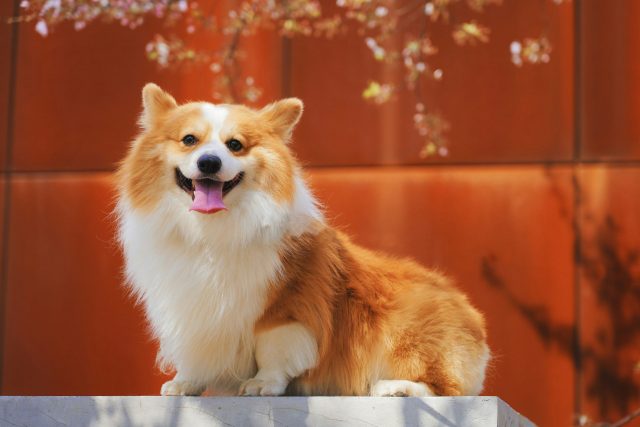Potty training is one of the most crucial aspects of raising a well-behaved dog. A well-potty-trained dog is not only a joy to have around but also significantly reduces the stress and mess associated with house accidents. The best strategies for potty training your dog are essential to ensure a smooth and successful process. These strategies help establish clear communication between you and your dog, promote good habits, and prevent unwanted behaviors.
In this article, we will explore the best strategies for potty training your dog, focusing on understanding your dog’s behavior, establishing a routine, positive reinforcement techniques, crate training, handling accidents, maintaining patience and consistency, avoiding common mistakes, and knowing when to seek professional help.

Introduction to The Best Strategies For Potty Training Your Dog
Potty training is an essential part of dog ownership. It ensures that your dog understands where and when it is appropriate to relieve themselves, preventing damage to your home and fostering a harmonious living environment. The best strategies for potty training your dog involve a combination of understanding your dog’s natural behaviors, establishing a routine, using positive reinforcement, and more. By implementing these strategies, you can make the potty training process smoother and more effective, ensuring that your dog develops good habits that will last a lifetime.
Discover The 11 Best Potty-Training Products For Puppies And Dogs
Understanding Your Dog’s Behavior
Understanding your dog’s natural behaviors can significantly aid in the potty training process. Dogs have instinctual behaviors that can be leveraged during training. For instance, dogs often need to go potty after eating, drinking, playing, or waking up from a nap. Observing these behaviors can help you anticipate when your dog needs to go, making it easier to guide them to the appropriate potty spot. Additionally, recognizing signs such as sniffing, circling, or whining can alert you that your dog needs to relieve themselves, allowing you to intervene promptly.
Establishing a Routine
Establishing a consistent routine is one of the best strategies for potty training your dog. Dogs thrive on routine, and a predictable schedule helps them understand what is expected of them. Start by taking your dog to the designated potty spot at regular intervals throughout the day, including first thing in the morning, after meals, and before bedtime. Consistency is key; by maintaining a regular schedule, your dog will learn to anticipate potty breaks, reducing the likelihood of accidents.
Positive Reinforcement Techniques
Positive reinforcement is a powerful tool in potty training. When your dog successfully uses the designated potty area, reward them with praise, treats, or playtime. This positive association reinforces the desired behavior, encouraging your dog to repeat it. It’s important to reward your dog immediately after they finish to ensure they understand what they are being praised for. Avoid punishment, as it can create fear and anxiety, hindering the potty training process.
Crate Training as a Potty Training Strategy
Crate training can be one of the best strategies for potty training your dog. Dogs naturally avoid soiling their sleeping area, so a properly sized crate can help prevent accidents. Ensure the crate is just large enough for your dog to stand, turn around, and lie down comfortably. Use the crate as a safe space for your dog when you cannot supervise them, gradually increasing the amount of time they spend inside. Always take your dog to the potty area immediately after releasing them from the crate to reinforce the association between leaving the crate and going potty.
Dealing with Accidents
Accidents are a natural part of the potty training process. It’s important to handle them calmly and effectively. If you catch your dog in the act, interrupt them with a firm but gentle “no,” and immediately take them to the designated potty area. Clean accidents thoroughly with an enzymatic cleaner to remove any lingering odors that might attract your dog back to the same spot. Avoid punishment, as it can create fear and hinder the training process.
The Role of Patience and Consistency
Patience and consistency are crucial in successfully potty training your dog. Potty training is a gradual process, and setbacks are common. Remain patient and maintain a consistent routine, reinforcing positive behaviors and calmly addressing accidents. Remember that every dog learns at their own pace, and persistence will ultimately lead to success.
Learn About Reverse Potty Training In Dogs Here
Common Mistakes to Avoid
Avoiding common mistakes can make the potty training process more effective. Some common mistakes include inconsistent schedules, punishing accidents, and not supervising your dog closely enough. Ensure that you establish a consistent routine, use positive reinforcement, and provide constant supervision, especially during the initial stages of training. Avoid giving your dog free rein of the house until they are reliably potty trained.
When to Seek Professional Help
While most dogs can be successfully potty trained with patience and consistency, some may require professional help. If your dog continues to have frequent accidents despite your best efforts, or if you notice behavioral issues such as anxiety or aggression related to potty training, it may be beneficial to consult a professional dog trainer or a veterinarian. They can provide additional guidance and support to address any underlying issues and help you achieve potty training success.
Find The Top 15 Easiest Dogs To Potty Train
Conclusion: Mastering The Best Strategies For Potty Training Your Dog
In conclusion, the best strategies for potty training your dog involve understanding your dog’s behavior, establishing a routine, using positive reinforcement, crate training, handling accidents calmly, maintaining patience and consistency, avoiding common mistakes, and seeking professional help when necessary. By implementing these strategies, you can ensure a smooth and successful potty training process, leading to a well-behaved and happy dog.

 Toledo, United States.
Toledo, United States.